DINOSAUR
Way back in 1988, Disney had toyed with creating a film (then called Dinosaurs) centered on a Styracosaurus named Woot and his struggles against a Tyrannosaurus rex named Gronzi. Filmed with stop-motion animation, Dinosaurs would’ve been gritty and filmed in the style of a nature documentary. In fact, the original script called for Woot to defeat Gronzi, only for both to perish in the Cretaceous-Paleogene mass extinction event.
Ultimately, Dinosaurs was sidelined by another project in the pipeline – The Little Mermaid. After Ariel’s 1989 debut, the Disney Renaissance was underway and Dinosaurs was set aside.
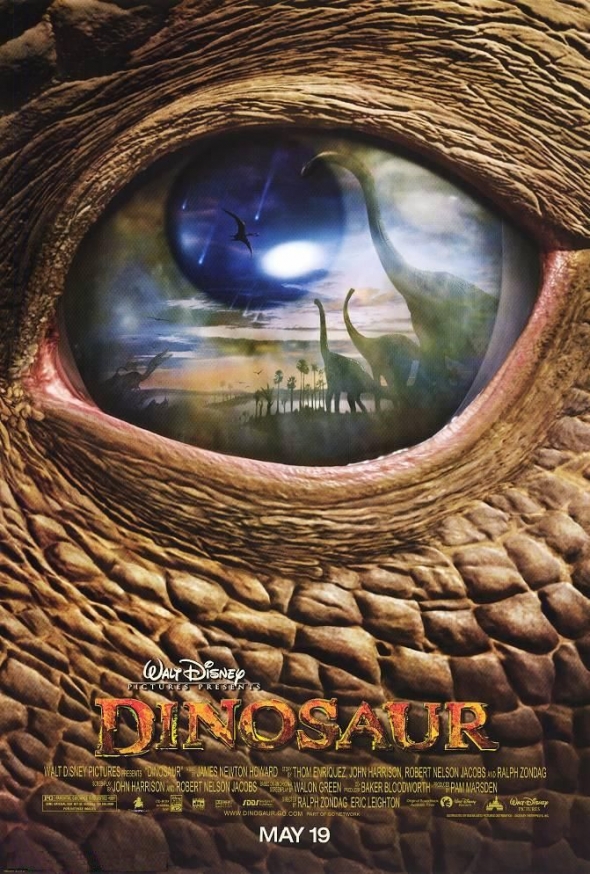
But after the success of incorporating computer-generated imagery (CGI) into Fantasia 2000, it was determined that the time was right to press forward with a dinosaur film using CGI rather than stop motion. A new creative team was brought in to develop a less bleak story and setting for the film. That’s when the Iguanodon and the Carnotaurus became the main actors, making the 1998 ride and the 2000 film natural and intentional complements.
Eisner was right about one thing: Dinosaur was unlike anything seen before. The film melded live-action backgrounds and location shots (mostly filmed in Venezuela) with CGI animated dinosaurs to develop a “photo-realistic” look. Brilliantly, the film’s unprecedented style was expressed to the public by way of a teaser trailer that literally just showed the first five minutes of the film to awe-struck audiences.
What it didn’t reveal was the movie’s plot. Dinosaur follows the migration of a young iguanodon named Aladar who’s orphaned by a devestating meteor shower as he and his adoptive family of lemurs move across the primeval world in search of the Nesting Grounds. Along their epic journey, they’re relentlessly pursued by a carnotaurus.
Another thing the trailer didn’t reveal? Eisner famously insisted that the dinosaurs speak in order to make the film more “commercially viable.” Perhaps famous film critic Roger Ebert put it best when he commented, “An enormous effort had been spent on making these dinosaurs seem real, and then an even greater effort was spent on undermining the illusion.” (There’s definitely an “uncanny valley” situation going on with the iguanodons’ beaked mouths being replaced with more articulate, human-like lips.)
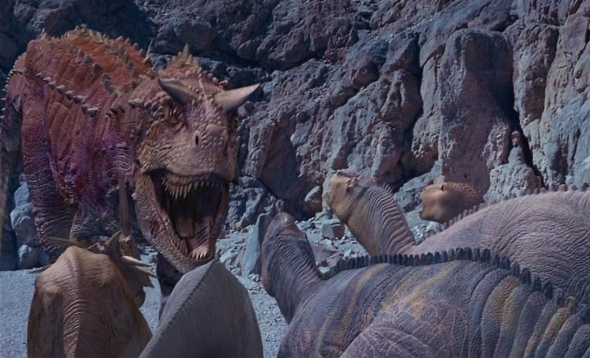
From our lofty hindsight perch at the dawn of the 2020s, we know that Dinosaur failed to make much of an impression. The most expensive film released in the year 2000, the film did go on to become a box office success, but likely due to the same, viral, you-gotta-see-it mentality that would later uplift AVATAR, leaving practically no footprint in pop culture whatsoever. Children born after 1998 are unlikely to have ever heard of Dinosaur, much less seen it. And frankly, the CGI that looked awe-inspiring in 2000 looks somewhat laughable today, killing the movie on repeat viewings.
And yet, just before the film’s release, Countdown to Extinction re-opened from a refurbishment with a new name and a few changes…
Rewriting history

On May 1, 2000 – just two weeks before the film’s debut – DINOSAUR opened at Disney’s Animal Kingdom in the spot once occupied by Countdown to Extinction. Was it a rename, or a retheme? It depends what you liked about the original ride… Here are some of the most significant-but-subtle changes…
1. Connections to the film
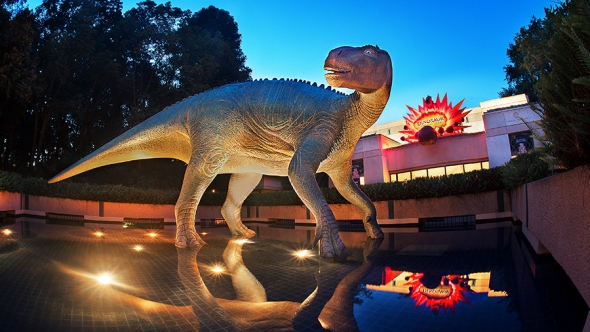
Of course, Animal Kingdom’s dino-themed dark ride had always been centered around an iguanodon and a carnotaurus (albeit, neither speaking, and observably not Aladar and his carnotaurus pursuer), but the name change was a clever bit of synergy between Walt Disney Studios and Disney Parks. Outside of the Dino Institute, the styracosaurus fountain was replaced with an iguanodon (though this one may be Aladar?) and footage of the film was inserted into the pre-show to more closely connect the ride.
Inside, the cat-and-mouse game of the carnotaur’s pursuit was re-emphasized as the leading narrative, and as such, the hurtling meteor finale was replaced with a final attack of the carnotaur to close that story.
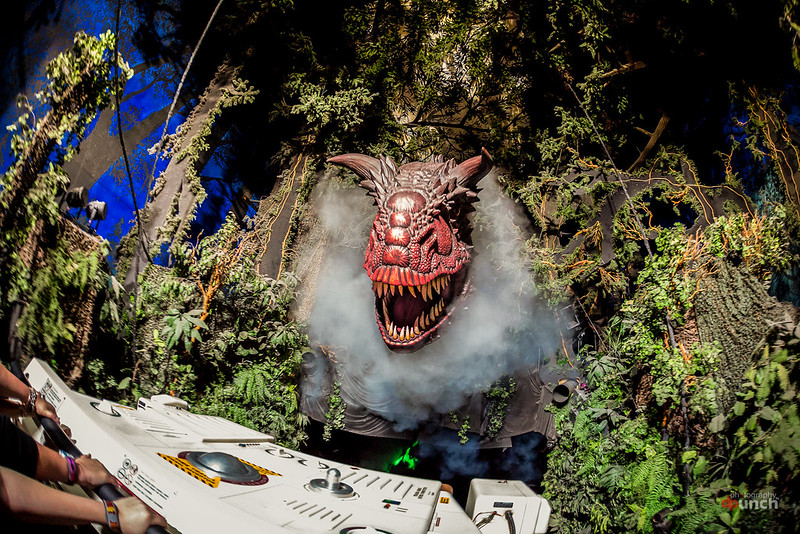
(For better or worse, that finale comes in the form of a somewhat uneven effect: a static, blacklight, cartoon-proportioned carnotaurus head that slides toward guests on a rolling rig as the Time Rover dives beneath it. It’s effective enough, and certainly a surprise on your first ride through… but on repeat rides, the frozen head-on-a-track reads as hokey and laughable; the kind of thing you’d expect from a blacklight dark ride at a carnival, not a Disney E-Ticket. Of course, as the closing act of an admittedly-uneven ride, it’s probably a good representation of DINOSAUR as a whole. Watch for it on the video later on this page.)
2. New narration
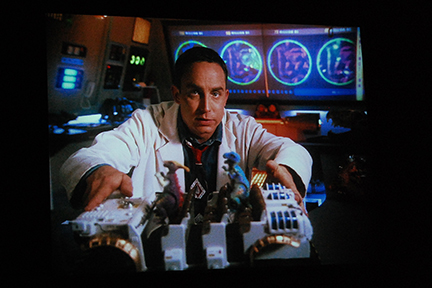
Frankly, Imagineers had been tweaking the ride’s audio from the start. Think about it – neither Countdown to Extinction nor DINOSAUR feature any on-ride music. Instead, Dr. Seeker and the voice of the Time Rover’s on-board computer narrate the journey. Since DINOSAUR is – by design – a bleak, dark, chaotic ride, the presence of Dr. Seeker has more than one role: it performs narrative exposition to tell us what we’re seeing (or not seeing) and what the vehicle is doing, it sets up the emotional cues music usually would, and it establishes whether we should be screaming, crying, or laughing.
That can be tricky! One need only look at another Lost Legend: The ExtraTERRORestrial Alien Encounter to know just how important tone can be, and how easy it is for “comic relief” to sap the atmosphere and pull guests out of the moment.

Even before the ride’s official opening, careful and fairly continuous edits were made to the narration and audio to the extent that, today, practically no dialogue remains from the ride’s original, pre-opening script. One-by-one, each line was re-recorded to be funny, but not distracting; expository, but not annoying; present and helpful, but well-timed between screams and roars. In short, the audio you’ll hear today is meant to…
- … explain what’s happening in the chaotic darkness (“Computer, what’s happening?!” Chirp chirp. ‘Loss of traction.’ | “Computer, now what?” Chirp chirp ‘Meteor shower in range‘ ;
- … remind riders of – and refocus on – the mission (“We’ve got to get in, get that iguanodon, and get out before the asteroid hits!” | “Setting Autopilot on homing signal… now!” | “Tracking a big dino on the scope; it could be ours!” | “Still not our dino…”)
- … and add tension rather than humor (“Forget it! Get them out now!” | “You’re not going to make it!”)
But the changes didn’t stop there.
3. Family friendliness

Remember, Disney expected the movie Dinosaur to become a new family classic like Toy Story or A Bug’s Life, so the new connection to the film would mean that the DINOSAUR ride would attract families with younger children – those fascinated with dinosaurs and who would doubtlessly fall in love with the new film. As such, the newly re-christened DINOSAUR ride would need a few edits to welcome younger, merchandise-hungry children.
For one thing, the EMV’s motion was relaxed to create a less jarring ride. Sure, DINOSAUR’s EMVs would still buck, rumble, roll, and shudder, but reduced motion meant that DINOSAUR’s height requirement could be lowered to 40 inches (versus Indiana Jones Adventure’s 46 inches!) to cater to the new family audience that would descend on the ride.
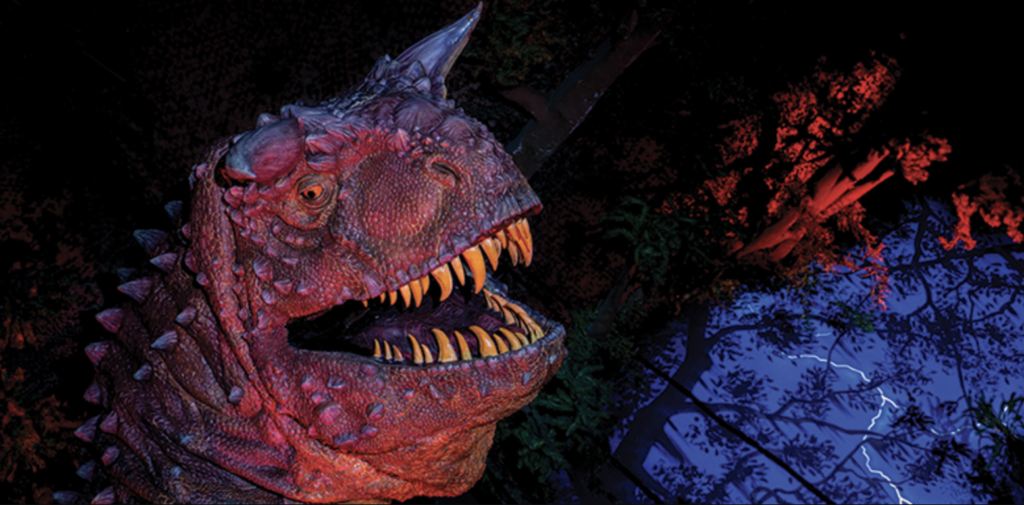
To go along with the new family audience, Disney set out to make subtle changes in audio, lighting, and more that would remove a little of the terror from the ride.
One famous example is the scene wherein the carnotaur takes off in a full-body sprint after the Time Rover. Originally, the EMV’s audio would take over from the Animatronic, simulating his approach in the darkness as his pounding footsteps and snarling grew closer and closer as if closing in. After the switch to DINOSAUR, this audio was changed to slowly fade out, giving the impression that the carnotaur was falling behind… just one example of the less overtly terrifying shifts that would make the ride more family-friendly.
Stop here and watch this point-of-view video of DINOSAUR as it currently exists. As you watch, consider: with a 40″ height requirement, an average five-year-old could ride DINOSAUR… but would they want to? Or would you five-year-old get off of DINOSAUR and be done with Disney’s Animal Kingdom?
That’s the big question, and the answer is that DINOSAUR is still terrifying! Some fans say that, with the shift to DINOSAUR, Disney created the same quagmire it found itself in when Alien Encounter became the Declassified Disaster: Stitch’s Great Escape. Their attempts to decrease the ride’s thrills only served to disappoint thrillseekers, but the ride is still way too scary for kids, meaning the experience isn’t really any “better” for any demographic.
That’s part of why most fans agree that – even if the changes are subtle – Countdown to Extinction was in most quantifiable ways a “better” ride than DINOSAUR is. Of course, the other part of the reason is because of what’s happened to DINOSAUR in the 20 years since…
Layers of dust
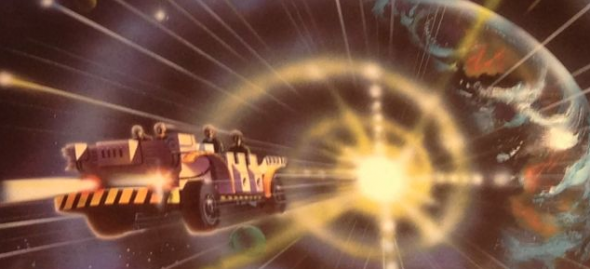
Like its big-screen namesake and the ancient animal it’s named for, time hasn’t always been kind to DINOSAUR at Disney’s Animal Kingdom.
Aside from the intentional “plusses” (that some count as “minuses”) that the ride underwent in 2000, upkeep on the attraction has been… well… spotty. A problem with the swooping pterodactyl, for example, meant that the static figure was simply bolted in place, lit by a blacklight (but clearly not moving), as it remains today.
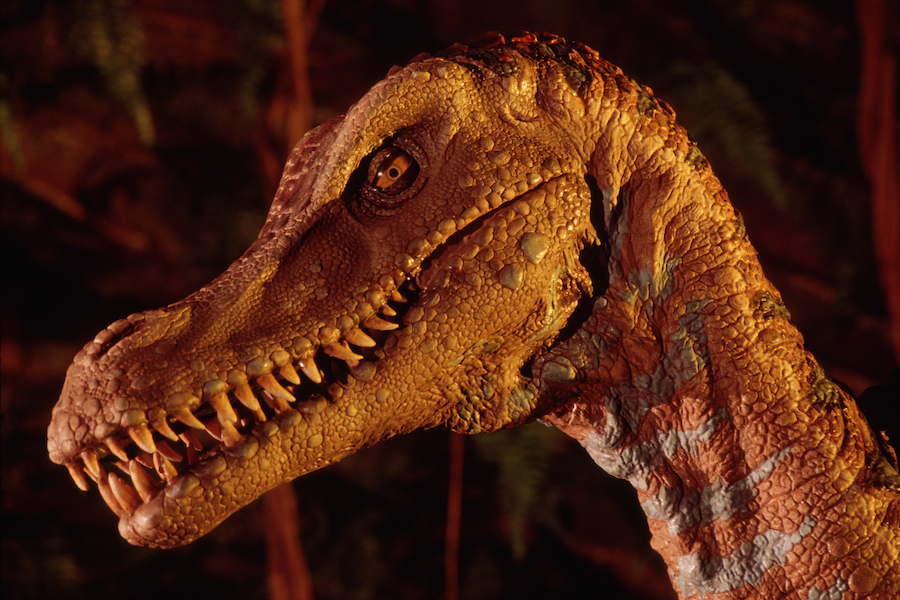
The compsognathus that cleverly “jumped” over the Time Rover by way of swinging arms passing through directed lights stopped moving and again became static figures simply lit in place as if hovering, frozen, over the vehicle. (Thankfully, they were replaced by projections onto flat walls after a 2016 refurbishment.)
Not only are the ride’s 11 Audio Animatronics a constant source of frustration for fans, but some of the ride’s effects are known to have simply flickered out of existence and gone years without replacement.
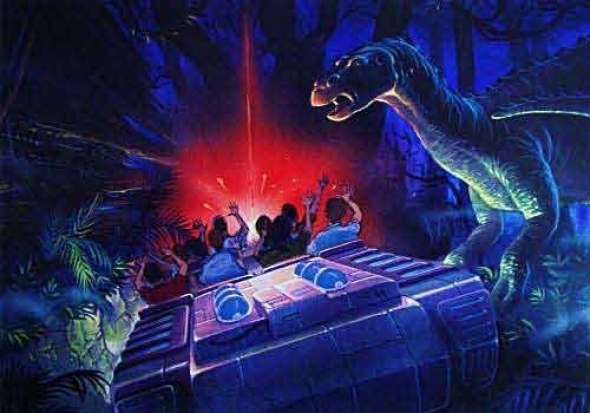
In the Time Tunnel, the laser portal stopped working after just a few years, and wasn’t replaced until 2016 when a simpler laser tunnel effect took its place. The Tunnel’s explosive flash meant to literally blind riders for a second to leap between time was discontinued as well. The result is that, now, while entering the Time Tunnel, riders can clearly see the black hallway ahead leading to the jungle and a green laser tunnel being projected from a tree trunk there, removing any sense of being suddenly transported.
Particularly the “return” Time Tunnel tends to be out of sync and thus, visible from the (hokey) finale. That’s a shame, because the combination of “We’re not gonna make it, we’re not gonna make it!,” the drop, the flashing, disorienting strobes, and sudden bass “BOOM” of the Time Tunnel’s oven lights returning is, when correctly timed, one of the most spectacular, goosebumps-inducing moments in any Disney dark ride.
While DINOSAUR always relied on darkness as its delivery method, most observers note that the ride has grown increasingly dark over the years, concealing missing and aging sets, and Audio Animatronics with reduced mobility. Pessimistic? Maybe. But as a look at the ride with work lights on shows, between its Animatronic encounters, DINOSAUR is mostly black walls, sound curtains, camouflage netting, and dusty potted plants. Which brings us to…
Legend, Marvel, or Disaster?

When we started our in-depth exploration into Countdown to Extinction and DINOSAUR, we asked you where you thought it belonged in our Collection – a question we’ve never before had to ask!
Is this ride best classified as a Lost Legend, where we ought to be looking back on Countdown to Extinction with memories of its greatness?
Is today’s DINOSAUR a Modern Marvel worth celebrating as one of the most spectacular rides on Earth?
Or is the story of this transition and the ride’s treatment since a textbook example of our Declassified Disasters, whose story should teach us all an important lesson about what not to do? Would DINOSAUR even be a contender for our Disaster series if it weren’t for inevitable comparisons to Disneyland’s Modern Marvel: Indiana Jones Adventure and the too-true fact that – but for the set dressings – Disney’s Animal Kingdom is this close to their own magnificent Indiana Jones ride?
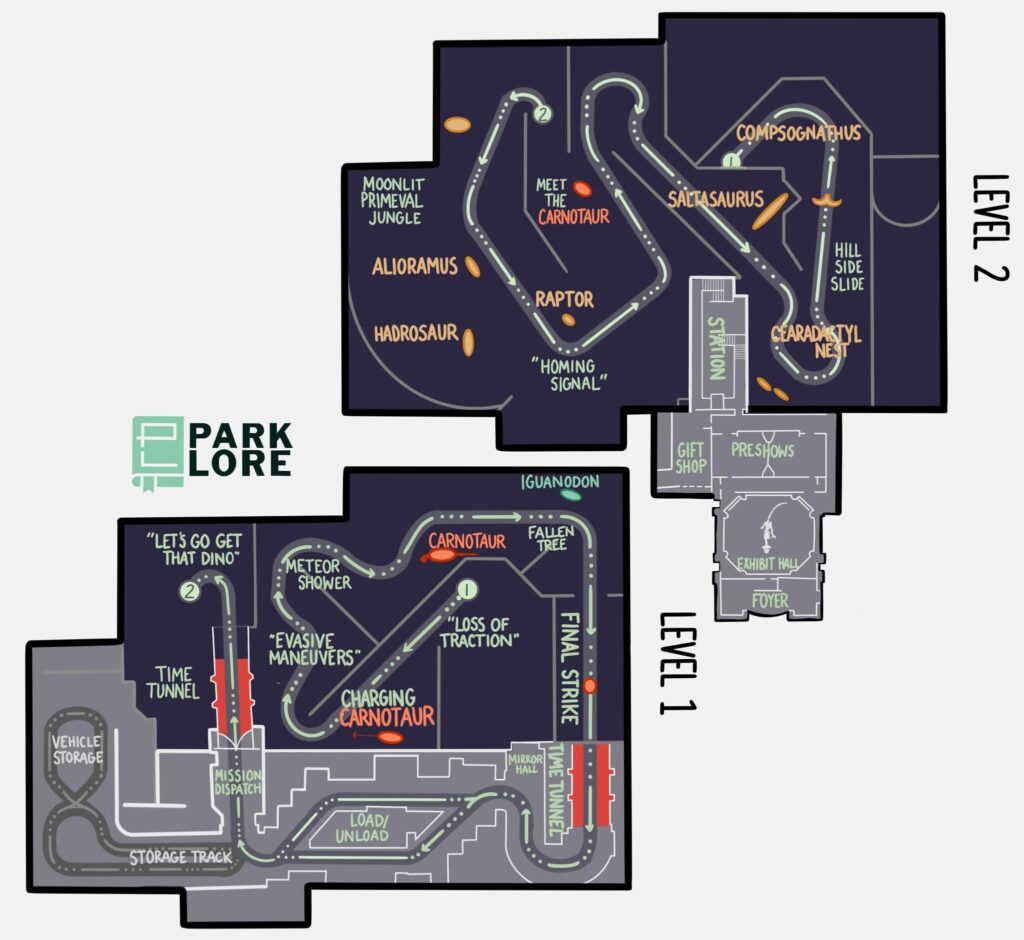
And for that matter, what do you make of the growing rumors that suggest that Disney is toying with the idea of turning all of Dinoland into an Indiana Jones themed South America that would officially close DINOSAUR forever to transform the ride into an Indiana Jones Adventure that it’s so close to being already? We can’t wait to read your thoughts in the comments below...
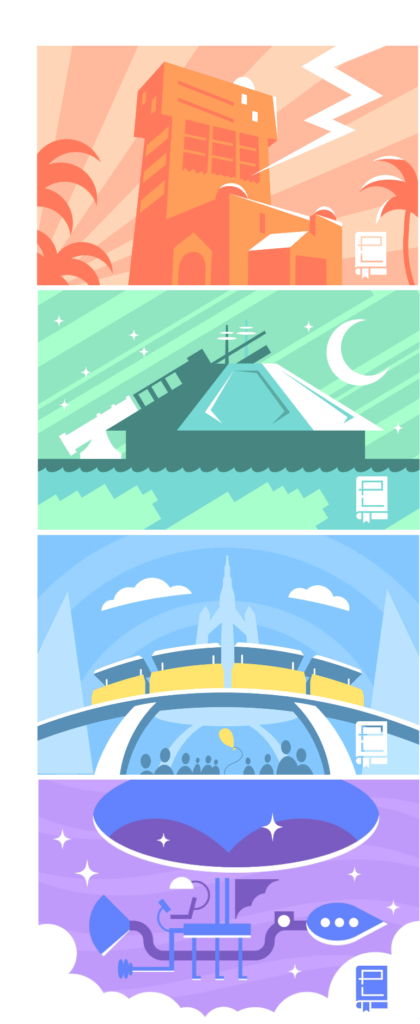
Thank you so much for reading. Now, it’s your turn to join the story. If you enjoy spending time falling down the “rabbit hole” of Park Lore’s in-depth, ad-free, member-supported stories, consider becoming a Member for as little as $2 / month.
Members can unlock rare concept art in every tale, reveal attraction audio streams in select stories, gain access to over a hundred exclusive articles in our quick-read Extra Features and in-depth Special Features collections, gain exclusive podcast extras, and receive an annual member card and merch in the mail! (Plus, y’know, supporting research-based, ad-free, clickbait-free, in-depth theme park writing!)


